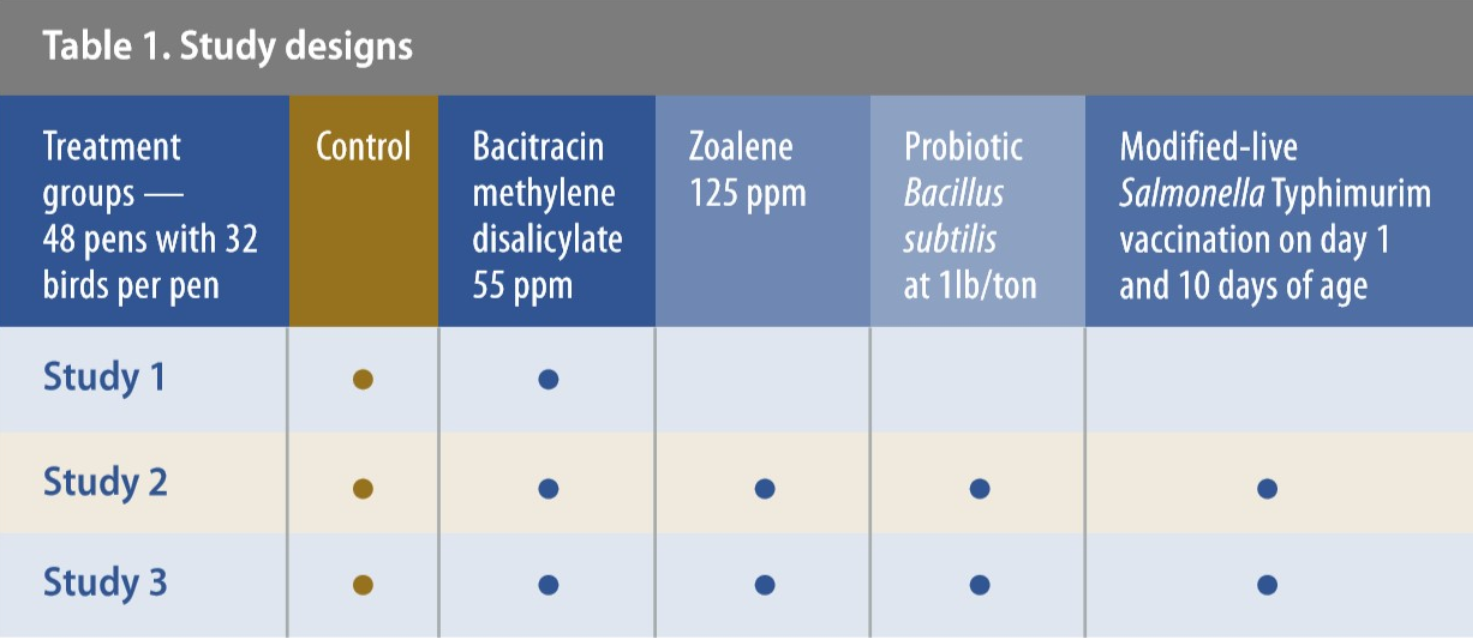



Good gut health can help minimize Salmonella in broilers
An interview with Manuel Da Costa, DVM, PhD, Associate Director, Outcomes Research, ZoetisQ: Zoetis has been conducting studies about the impact of gut health on the prevalence of Salmonella in broilers. What’s the connection between the two?
DM:We’ve known for years that withdrawing or reducing antibiotic use can be related to a higher Salmonella prevalence.1 We also know necrotic enteritis (NE) is a big problem in broilers raised without antibiotics, although NE can also affect conventional flocks.2 NE is often preceded by coccidiosis, which causes gut damage that enables Clostridium perfringens to proliferate, leading to NE.3
Q: What was the goal of the studies?
DM: We want to help producers meet USDA’s stricter performance standards for Salmonella at processing — whether they are raising broilers with or without antibiotics.
We theorized that if gut health could be maintained and NE controlled, the Salmonella prevalence and load would decrease. Toward that end, we tested various interventions to see which ones helped control coccidiosis and NE and if that, in turn, reduced Salmonella.
Q: How were the studies set up?
MD: We conducted three controlled broiler-pen studies (Table 1) with Colorado Quality Research.4 We included bacitracin methylene disalicylate (BMD®) because it’s indicated for NE prevention and control. We also tested antibiotic alternatives used in “no antibiotics ever” (NAE) production systems, as well as vaccination against Salmonella.

Q: Were these challenge studies?
MD: Yes. In all three studies, we administered Eimeria spp. — various species of the parasite that causes coccidiosis — to birds at 14 days of age. At 18 days of age, we administered C. perfringens in feed and Salmonella Heidelberg, which was given orally. Controls were challenged but did not receive any interventions for NE or Salmonella.
Q: How did you evaluate results?
MD: We looked at lesion scores 3 days after challenge with C. perfringens. At 42 days of age — the end of the study — we evaluated performance, mortality and the incidence and load of Salmonella.
Q: What were the results in the first study?
MD: In broilers that received BMD, there was a significant reduction (p < 0.05) of the Salmonella load on boot swabs and in the prevalence of Salmonella in carcass rinses. By the end of the study and compared to controls, NE lesion scores decreased, mortality was negligible and feed conversion improved by 6 points.
It’s important to note that BMD has no effect on Salmonella. BMD is effective against Gram-positive bacteria such as C. perfringens, but Salmonella is a Gram-negative pathogen. This study therefore provides evidence that by preventing NE with BMD, the prevalence of Salmonella may be reduced.
Q: And the results in Studies 2 and 3? Did vaccination or feed additives reduce Salmonella?
MD: The modified-live Salmonella Typhimurim vaccination effectively reduced the Salmonella load and prevalence even in the presence of NE.
Our ability to compare the effect of the feed additives was limited because the Salmonella presence in samples we collected was lower than it was in Study 1. Overall, the results with feed additives in Studies 2 and 3 were somewhat variable. The best reductions in Salmonella prevalence and load were achieved with BMD, followed by zoalene then the probiotic interventions. In Study 3, ceca and boot-swab numbers were substantially reduced compared to controls. For commercial producers, even modest reductions can have a major impact on Salmonella detection at processing
Q: How can your results help operations with NAE flocks that can’t use BMD?
MD: Our work indicates broiler integrators should carefully evaluate their gut-health control strategies since they can affect the Salmonella prevalence and load. Vaccination against Salmonella is an effective option. In addition, some feed-additive interventions can help mitigate enteric disease and, to some extent, control Salmonella proliferation.
| References | ||||
|---|---|---|---|---|
| 1 Russell S. Processing Tip…A possible reason why more plants are failing the Salmonella performance standard. The University of Georgia, Cooperative Extension Service. January 2005. | ||||
| 2 Hargis B. Overview of Necrotic Enteritis in Poultry. Merck Veterinary Manual. | ||||
| 3 Ibid. | ||||
| 4 Data on file, Study Report Nos. 06-16-7AMVG, 02-177AMVG, 03-17-AMVG, Zoetis LLC. | ||||













